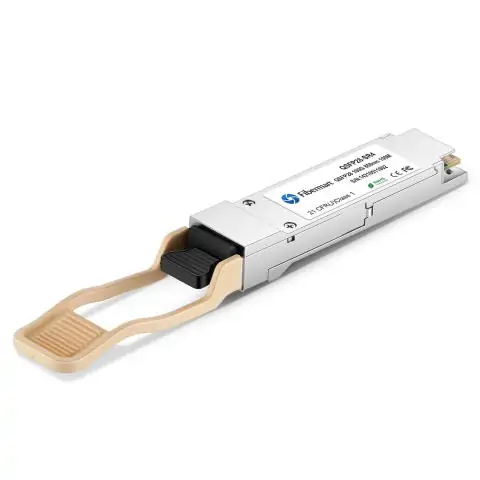In today’s fast-paced world, the need for quick, stable, and reliable internet connections is greater than ever. Whether it’s a family streaming their favorite movies, a business hosting virtual meetings, or a data center transferring massive amounts of information, one technology makes all of this possible—fiber optic transceivers. These small yet powerful devices play a huge role in keeping our modern digital lives running smoothly.
A fiber optic transceiver is essentially a bridge between networking devices and fiber optic cables. It converts electrical signals from devices like switches, routers, or servers into light signals that travel through fiber optic cables. At the other end, another transceiver converts the light back into electrical signals for the receiving device. This process happens so quickly that you hardly notice it, yet it’s the reason we can send and receive data at lightning speed.
The main advantage of fiber optic transceivers is speed. Traditional copper cables carry electrical signals, which can slow down over distance and are prone to interference. Fiber optics use light, which travels much faster and can carry significantly more data without losing quality. Depending on the type, fiber optic transceivers can support speeds ranging from a few megabits to hundreds of gigabits per second.
Distance is another area where fiber optic transceivers shine. Copper cables tend to lose their signal strength after a few hundred meters, but fiber optics can transmit data for miles without significant loss. This is especially important for large organizations, internet service providers, and global communications networks that need to move data across cities or even continents.
Reliability is another strong point. Fiber optic technology is resistant to electromagnetic interference, meaning that data transmission remains stable even in areas with heavy machinery, strong electrical fields, or radio signals. This makes fiber optic transceivers ideal for industries like healthcare, finance, aviation, and emergency services, where communication must be consistent and secure.
One of the best things about fiber optic transceivers is their flexibility. They come in various types to meet different needs. SFP (Small Form-factor Pluggable) modules are common because they are small and hot-swappable, meaning they can be replaced without shutting down the system. For higher speeds, there are SFP+, QSFP, and CFP models designed for more demanding applications. This variety ensures that there’s a transceiver suitable for everything from a small office network to a massive data center.
Cost has also become more affordable. In the past, fiber optic technology was considered expensive and mainly used by large corporations. Today, thanks to advances in manufacturing and higher demand, prices have dropped significantly. The modular design of fiber optic transceivers means upgrades are easy—just swap out the transceiver rather than replacing the entire system, saving both time and money.
Durability is another big advantage. Fiber optic transceivers and cables are built to withstand a wide range of conditions. They can handle temperature changes, humidity, and even harsh outdoor environments. This makes them perfect for industrial sites, outdoor networks, and remote installations where traditional cables might fail.
Another benefit is energy efficiency. Since fiber optic technology uses light instead of electrical signals, it requires less power, especially over long distances. This lower energy consumption reduces operating costs and supports environmentally friendly initiatives for organizations looking to be more sustainable.
The importance of fiber optic transceivers is growing alongside emerging technologies. The rollout of 5G networks depends on them for transferring huge volumes of data quickly between mobile towers and core networks. Cloud computing services rely on these devices to move massive amounts of data between servers and users. Even artificial intelligence and machine learning applications require the fast, low-latency connections made possible by fiber optic transceivers.
Smart cities are another area where fiber optic transceivers are essential. From traffic control systems to public Wi-Fi and connected security cameras, fiber optics provide the real-time data transmission needed for these services to operate efficiently. Without fiber optic technology, such advanced city systems would be far slower and less effective.
Even in homes, fiber optic transceivers make a noticeable difference. With more people working remotely, attending online classes, and using streaming services, the demand for stable high-speed internet has never been higher. Fiber optic internet connections powered by these transceivers allow multiple devices to run at once without lag, buffering, or interruptions.
Choosing the right fiber optic transceiver requires considering speed, distance, and compatibility. Single-mode fiber transceivers are best for long-distance communication, while multi-mode fiber transceivers are better suited for shorter distances within buildings or campuses. It’s also important to match the correct connector type to the network’s existing setup to ensure smooth operation.
Maintenance of fiber optic transceivers is relatively simple. Regular cleaning of the connectors can help prevent dust and dirt from affecting performance. Because they are modular, replacing a faulty transceiver is quick and usually doesn’t require taking the network offline. This ease of maintenance makes them a practical choice for both small businesses and large enterprises.
Looking to the future, fiber optic transceivers will remain a cornerstone of our communication systems. As new technologies like virtual reality, augmented reality, autonomous vehicles, and advanced robotics become more common, the demand for ultra-fast, low-latency networks will continue to grow. Fiber optic transceivers will be at the heart of delivering the speeds and reliability these innovations require.
In many ways, fiber optic transceivers are the silent heroes of the internet age. They work quietly behind the scenes, making sure that emails arrive instantly, video calls run without glitches, and massive amounts of data move seamlessly across the globe. Without them, our connected world would be much slower and less reliable.
So the next time you enjoy a flawless video chat, stream your favorite movie in 4K, or transfer a large file in seconds, remember that fiber optic transceivers are working hard to make it happen. These tiny devices might not be something you see every day, but they’re powering the fast, dependable networks that keep our lives running smoothly—and their importance will only grow in the years ahead.

